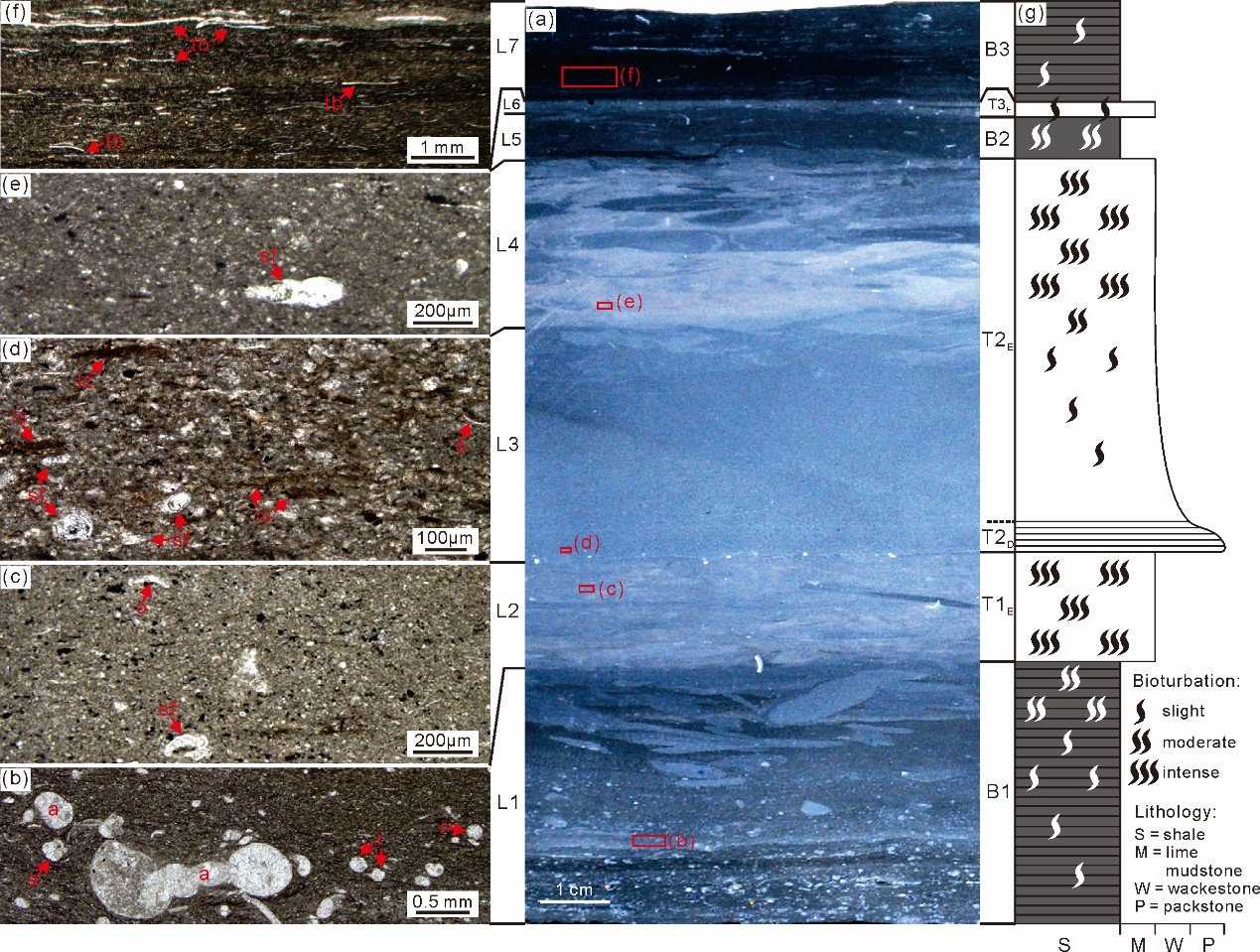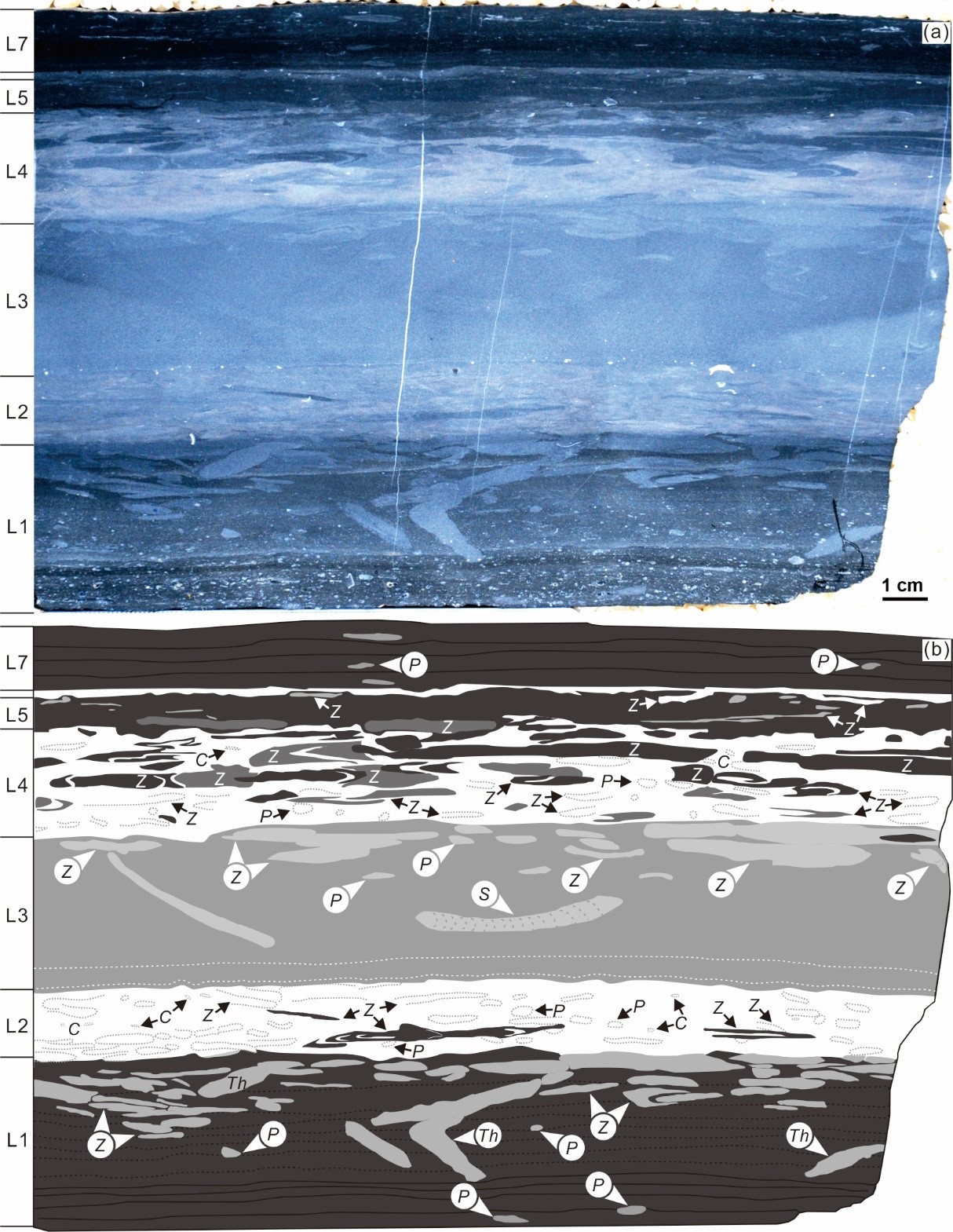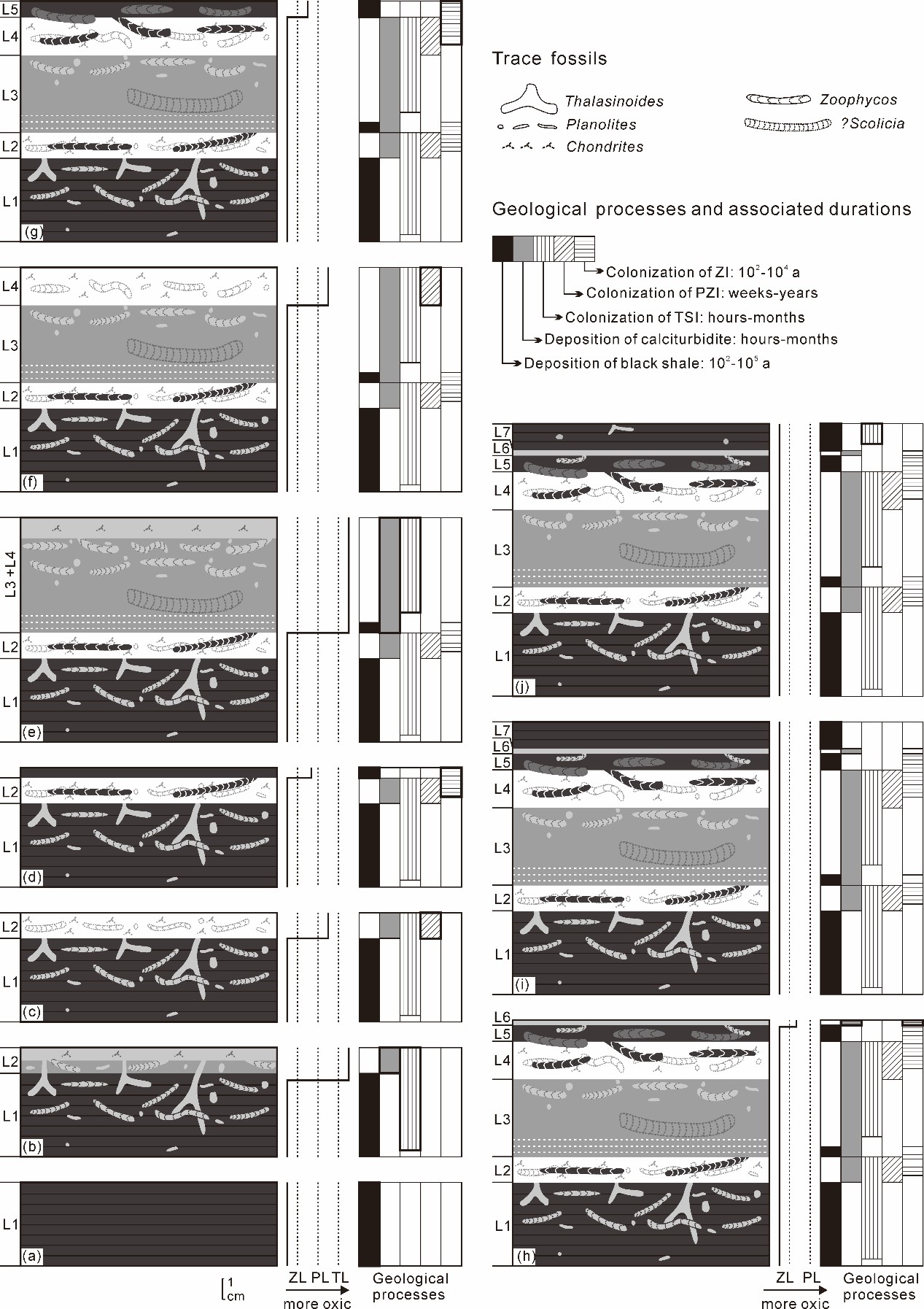Trace fossils are fossilized structures produced on or within a substrate by the life processes of ancient organisms, including tracks, trails, burrows, borings, and other structures (eg, root molds, egg fossils, coprolites, etc). Ichnocoenosis is a suite of trace fossils representing the work of a particular benthic community. An ichnocoenosis is a powerful tool for reconstructing sedimentary settings and retrieving palaeoenvironmental factors (eg, relative oxygen content, water depth, salinity, etc). However, it is a challenge to recognize and apply ichnocoenoses in the geological record for the sake of time-averaging by non-deposition or slow depositional rates and the destruction and elimination by deeper-tiered traces.
Additionally, turbidity currents have proven to be an important mixing way for stratified waterbodies in modern oxygen-deficient basins. These density flows transport sediments and oxygen-rich waters from shallow-water environments to deep basins, which can considerably change the chemistry and oxygen content of the deep-basin waters. However, turbidity current-induced oxygenation events in oxygen-deficient basins have rarely been directly demonstrated in the geological record. As a common mechanism for the oxygenation of water bodies in oxygen-deficient basins, turbidity current has not received the necessary attention.
Recently, Associate Research Professor ZHENG Quanfeng and Research Professor CAO Changqun from the Nanjing Institute of Geology and Palaeontology, Chinese Academy of Sciences (NIGPAS), made high-resolution sedimentological and ichnological studies on the upper member of the Talung Formation at Shangsi, Guangyuan City, Sichuan Province, to reveal the dynamic process of turbidity current-induced benthic-marine oxygenation evidenced by sequential ichnocoenoses.
This study was published on Geological Journal on July 11.
The research team found that the studied interval consists mainly of background sedimentation of black shale and rapid event sedimentation of fine-grained calciturbidite. The black shale contains fine laminations and weak bioturbation and lacks primary burrows (burrows produced during the deposition of the black shale), indicating anoxic benthic marine conditions. The calciturbidite was intensely bioturbated, and contain abundant primary burrows.
Based on cross-cutting relationships and burrow-fill features, three successive ichnocoenoses can be recognized in the typical calciturbidites: (1) the early-phase Thalassinoides/?Scolicia ichnocoenosis, including Thalassinoides/?Scolicia, Zoophycos, and Planolites, which has the largest maximum burrow diameter (MBD) and maximum penetration depth (MPD) and represents the highest oxygen level among the three ichnocoenoses; (2) the later-phase Planolites-Zoophycos ichnocoenosis, including Zoophycos, Planolites, large Chondrites, and small Chondrites, which has the moderate MBD and MPD and represents the moderate oxygen level; (3) the latest-phase Zoophycos ichnocoenosis, composed of monospecific Zoophycos burrows, which has the smallest MBD and MPD and represents the lowest oxygen level.
The Thalassinoides/?Scolica ichnocoenosis was produced at the very end and immediately after the emplacement of the turbidites, representing the climax of the turbidity-induced oxygenation. The Planolites-Zoophycos ichnocoenosis was produced during a later stage after the emplacement of the turbidites, indicating a relatively more reducing bottom-water condition. The Zoophycos ichnocoenosis was produced during a further later but relatively long stage after the emplacement of the turbidites, indicating a much more reducing bottom-water condition.
“This study demonstrated that turbidity current is an effective way to locally oxygenate bottom waters in oxygen-deficient basins which has significant impacts on benthic communities”, says ZHENG.
This research was supported by the National Natural Science Foundation of China and the Chinese Academy of Sciences.
Reference: Zheng, Q.F.*, Cao, C.Q., 2023. Dynamic process of turbidity current-induced benthic-marine oxygenation evidenced by sequential ichnocoenoses: An example from a Late Permian oxygen-deficient basin. Geological Journal, https://doi.org/10.1002/gj.4837.

Fig. 1. Lithofacies (a), microfacies (b ~ f), and sedimentological logs (g) of the study interval. (Image by NIGPAS)

Fig. 2. Vertically polished slab (a) and line drawing (b) of the studied interval. (Image by NIGPAS)

Fig. 3. Schematic drawings showing the ichnocoenosis succession and the dynamic process of turbidity current-induced benthic-marine oxygenations during the deposition of the studied interval. (Image by NIGPAS)
Contact:
LIU Yun, Propagandist
Email: yunliu@nigpas.ac.cn
Nanjing Institute of Geology and Palaeontology, Chinese Academy of Sciences
Nanjing, Jiangsu 210008, China
Download:
